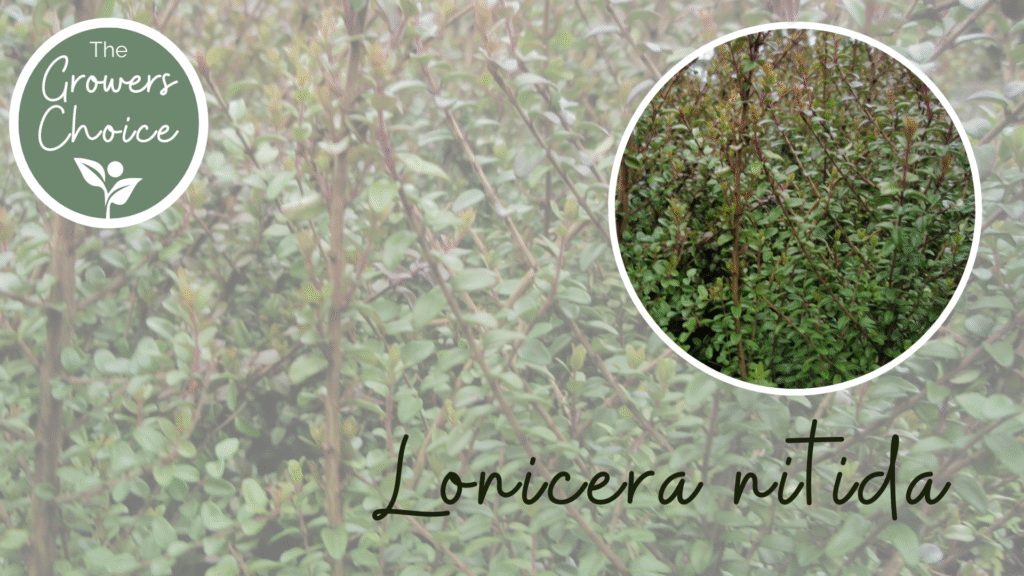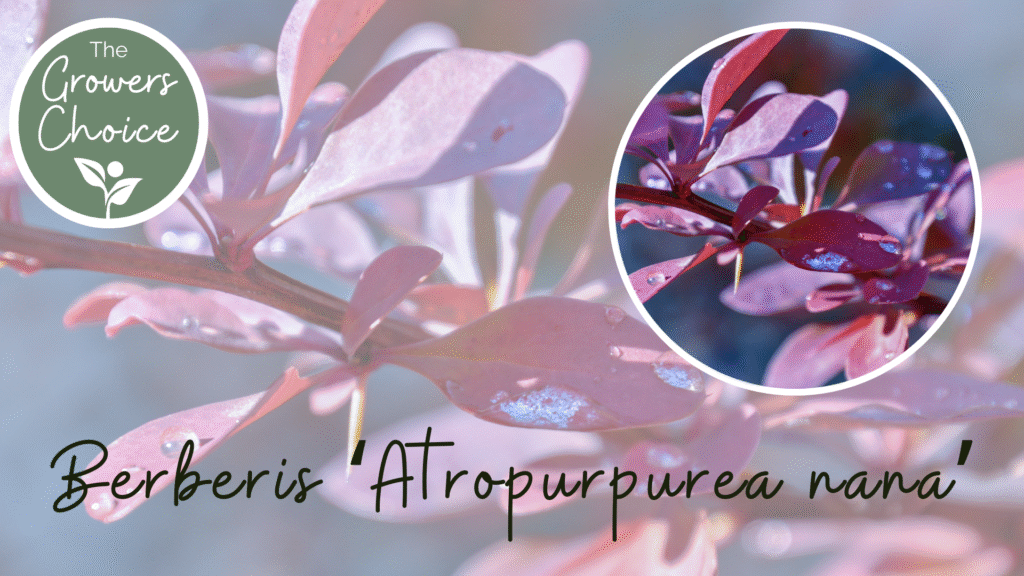
While fences and walls are a go-to for creating privacy in small gardens, hedging plants offer a beautiful, natural alternative that blends seamlessly with the landscape. Not only can hedges soften hard boundaries, but they also support wildlife, introduce seasonal interest, and enhance the overall feel of a garden. If you’re short on space but still want structure, privacy, and greenery, here are some of our favourite compact hedging plants that work wonders in smaller spaces.

1. Taxus baccata
Commonly known as English Yew, is a timeless evergreen that’s ideal for low-maintenance, formal hedging. Its dense, dark green foliage creates a striking screen that can be clipped into precise shapes or left to grow more naturally. Although it can reach impressive heights of up to 20 metres, it responds exceptionally well to pruning, so you can easily maintain it as a low hedge to suit your garden’s scale. Yew hedging thrives in sun or partial shade and prefers well-drained, fertile soil. Its slow growth rate makes it manageable in small spaces, and its year-round structure offers visual interest in winter. Available in various pot sizes (2L to 10L) and as rootballs from November to March.
Available in 2L, 3L, 5L, 10L + pot sizes and as a rootball from November – March





2. Ilex crenata
If you’re looking for a neat, box-like hedge without the risk of box blight, Ilex crenata is a top choice. This evergreen shrub closely resembles Buxus with its small, dark green leaves but offers added resilience, making it a great alternative in areas where boxwood is prone to disease. It can be easily shaped and maintained at a compact height, making it perfect for lining paths, framing garden beds, or adding structure to a courtyard garden. Ilex crenata prefers full sun to partial shade and grows best in well-drained, fertile soil. With a mature height of around 5 metres, it can be clipped regularly to keep it much shorter and more formal in appearance. Available in 2L and 5L pots, with other sizes available seasonally.




Available in 2L and 5L pots and other sizes subject to availability

3. Lavender Hidcote
For a low, fragrant hedge that brings colour, texture, and pollinators to your garden, look no further than Lavender ‘Hidcote’. This compact variety is perfect for edging borders, driveways, or pathways, and its vibrant purple flower spikes provide a striking contrast to the silvery-green foliage. Blooming from July to September, it offers months of scent and is loved by bees and butterflies. While it only grows to around 60cm in height, its impact is big — especially when planted in rows. Lavender thrives in full sun and well-drained, alkaline to neutral soil. It’s also drought-tolerant once established, making it an excellent choice for low-maintenance gardens with a Mediterranean feel.





4. Buxus sempervirens
Buxus sempervirens remains a favourite for traditional, low formal hedging. It’s slow-growing (around 10–20cm per year), making it easy to maintain in even the smallest spaces. Ideal for creating tidy edges to paths or garden beds, Buxus needs only one or two trims a year to retain its neat appearance. Its dense, evergreen foliage provides structure year-round and is especially effective in formal or symmetrical garden designs. Although it can eventually grow up to 5 metres, it is easily kept as a small hedge with regular pruning. Buxus grows best in partial shade and well-drained, fertile soil. If you’re concerned about box blight, we recommend exploring some of our alternatives, such as Ilex or Euonymus, which offer similar aesthetics with greater disease resistance.




5. Euonymus ‘Jean Hughes’
A newer addition to our hedging favourites, Euonymus ‘Jean Hughes’ is a compact evergreen shrub that’s quickly becoming a go-to choice for low borders and hedging. With its naturally dense, bushy growth habit, it forms an effective small hedge without requiring constant attention. It’s particularly useful in modern gardens where tidy lines and low maintenance are key. Growing up to around 1 metre in height, it’s easy to manage and suitable for both sun and partial shade. It performs best in moist but well-drained soil and is resilient in urban or exposed settings. Euonymus also offers visual interest throughout the year with its tidy shape and deep green leaves, making it a versatile and attractive hedge option.





6. Hebe ‘Red Edge’
For a small, attractive evergreen hedge that adds subtle colour and texture, Hebe ‘Red Edge’ is a fantastic choice. Its compact growth habit and distinctive silver-green leaves with red-tinged edges make it an eye-catching plant for front-of-border planting or lining paths. It grows up to just 45cm tall, making it one of the smallest options on this list, but its visual charm and tidy form make it ideal for smaller spaces where taller hedges may be overwhelming. It performs well in full sun to partial shade and prefers moist, well-drained soil that leans slightly alkaline. With its modest size and ornamental foliage, Hebe ‘Red Edge’ is especially useful in coastal or low-maintenance gardens.




7. Lonicera nitida
Lonicera nitida, often referred to as shrubby honeysuckle or box-leaved honeysuckle, is a fast-growing, small-leaved evergreen shrub that works beautifully as a compact hedge. It’s one of the best alternatives to Buxus for those looking to avoid issues with box blight or slow growth. The fine-textured foliage resembles boxwood but grows more quickly, making it ideal for gardeners who want to establish a low boundary or formal shape in less time. Lonicera nitida tolerates a wide range of soil conditions and light levels — from full sun to full shade — and responds well to clipping, even into topiary forms. It’s especially useful in urban gardens, formal borders, or as edging for paths. Though it can grow to 1.5 metres, it’s easily kept smaller with regular trimming.
📏 Height: Up to 1.5m (easily kept shorter)
☀️ Position: Sun to shade
🌱 Soil: Most well-drained soils
✅ Fast-growing and resilient

8. Berberis thunbergii ‘Atropurpurea Nana’
Berberis thunbergii ‘Atropurpurea Nana’ is a colourful, compact deciduous shrub that provides both structure and seasonal interest. With rich, purple-red foliage, bright yellow spring flowers, and red berries in autumn, it offers a full year of appeal. It’s also incredibly functional — the thorny stems make it an effective low-security hedge, helping to deter unwanted intrusions while still looking attractive. Growing to around 50–100cm tall, it’s ideal for garden edges, mixed borders, or as a low informal hedge. Berberis is also very hardy and drought-tolerant once established, making it a great choice for low-maintenance gardens or exposed sites. Plant it in full sun to get the richest foliage colour, and enjoy its resilience and wildlife-friendly nature.
📏 Height: 0.5 – 1m
☀️ Position: Full sun for best colour
🌱 Soil: Tolerates most soils
✅ Drought-tolerant, wildlife-friendly
🌱 Need more help choosing the right hedging plant for your garden?
Visit our Solutions page for more expert advice tailored to your garden’s conditions and style — whether you’re planting in shade, on a slope, or near the coast, we have the perfect plant for every scenario. Or get in touch with our friendly team for personalised recommendations.
Posted 11th Mar 4:34pm